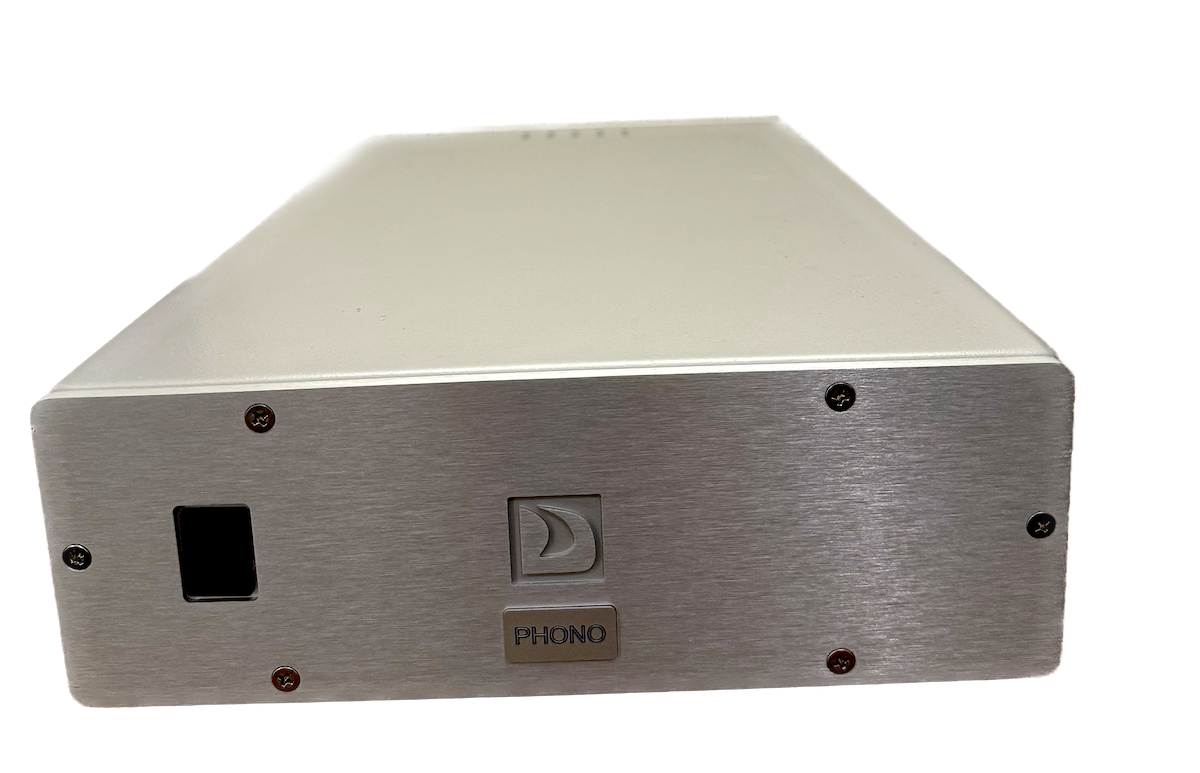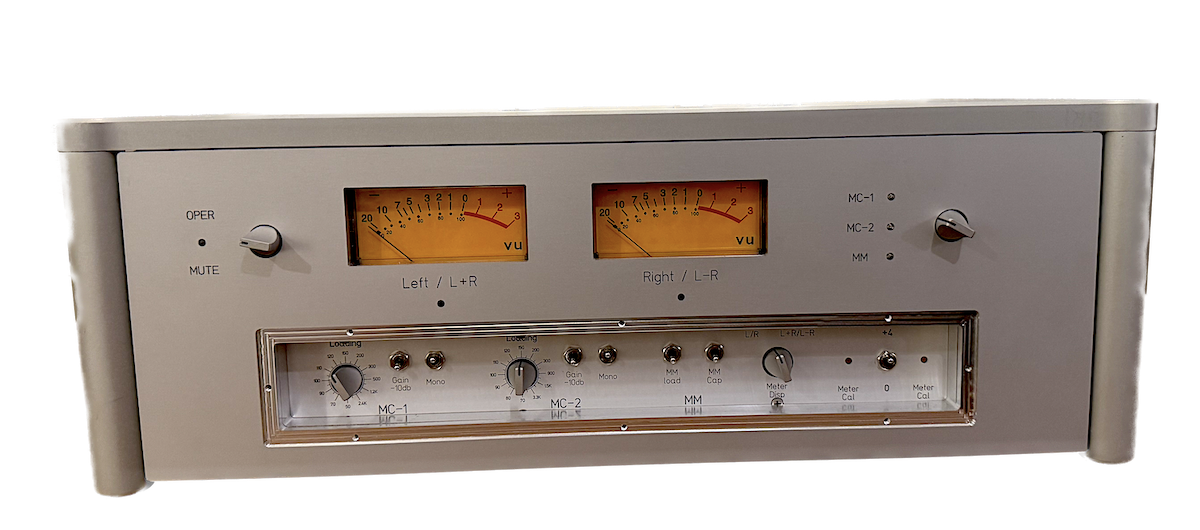Doshi Audio Evolution SE Phono Stage Is a Further Evolved Evolution
a "one off" for a special customer grabbed the attention of more than a few Doshi aficionados
One of my favorite demo LPs—heck, one of my favorite LPs, period—is the 45rpm reissue by the late, lamented Classic Records of the Mussorgsky/Ravel Pictures At An Exhibition, which was originally released by RCA on its fabled "Shaded Dog" Living Stereo label. It was recorded in 1958 at Orchestra Hall and features the Chicago Symphony led by the legendary conductor Fritz Reiner. A young Adolph Herseth, probably the best orchestral trumpeter of the past century, nails every one of his solos. A sonic delight, in other words.
Having listened to this performance numerous times, I was shocked by how much more I heard when I played it through the new, bespoke SE version of the Doshi Audio Evolution phono stage. When I say “more,” I don’t simply or merely mean additional detail. Instead, it was the scale, the sweep and the power of the presentation. Coupled to the Avantgarde Trio G3 loudspeakers and Space horns and the Air Force Zero turntable, I didn’t discern but viscerally felt the slam of the bass drum pounding away even as rest of the orchestral played full tilt. The dynamic expansion and range seemed unlimited.
Perhaps I should not have been altogether surprised as the eponymous phono stage’s designer Nick Doshi has been working on refining his tubed gear for several decades. A gifted engineer who worked for public radio for many years, including PBS, Doshi focuses on fidelity to the original sound, as far as possible. The sonic character of his gear is not overly warm or fuzzy or cuddly. Instead, it's fast, dynamic and linear. The phono stage that he submitted for review is a special edition version that he makes only upon request. It boasts everything from Vishay resistors to tantalum capacitors to a special umbilical cord that was sourced from New England cable in Maine and designed by Josh Clark (who now owns the Rockport loudspeaker company). The controls, including loading and volume, are all situated on the front of the unit, which relies on hand operation rather than a remote control.
The two-box $36,000 Evolution SE phono stage hews to traditional tube amplification design. The moving magnet section provides 50dB of gain and the moving coil section provides 24dB of additional gain for a 74dB total. It can be reduced by 6dB via a switch on the front panel, which I did. All loading is performed via a knob on the front panel as well. The second moving coil input has a mono and stereo switch. You can add different playback equalizations to the unit if you prefer. It employs zero feedback and passive RIAA equalization, the template that’s been used for years to optimize vinyl playback. Doshi is working on including a card for optical cartridges, but raises an eyebrow, much as Michael Fremer does, over their technical measurements. For Doshi, an RIAA curve offers the best measured result.
 The SE pictured at the top evolved from this, the less evolved standard Evolution Phono Stage
The SE pictured at the top evolved from this, the less evolved standard Evolution Phono Stage
Doshi has gone to considerable lengths to ensure that the separate power supply is never affected by the modulation of the signal inside the tubes in the main unit. “The power supply,” he crisply assured me, “is not affected by the signal.” He added, “The power supply is fully regulated to ensure low levels of noise. It has a series shunt power supply, operating like a voltage source; it has almost unlimited amounts of current. The result is a very low output impedance.” Wiring is point-to-point. The snazzy meters in front can even be used as a kind of built-in Fozgometer to adjust azimuth (minus the late Jim Fosgate’s unique surround sound processor logic circuit adapted in service of analog_ed.). Gain is achieved with JFETS and vacuum tubes for the moving magnet and moving coil sections. Doshi employs two 12AX7, 12AT7, and 12DW7 tubes.
 Doshi Evolution SE Power Supply
Doshi Evolution SE Power Supply
One thing that this technological fastidiousness accomplishes is tremendous grip and control. On the aforementioned Mussorgsky/Ravel I was fascinated, among other things, by the finality of the percussion system. There is no sense of overhang. Instead, the sensation is akin to the direct drive K3 turntable from Oswald Mills that I had in my system for several months, which is to say that transients stop and start on a dime. On a venerable Cheech and Chong album that I occasionally listen to for giggles and grins called Los Cochinos, I was struck by the clarity of the voices, including background remarks and guffaws on the initial number “Sargent Stadanko,”’ a spoof of an overly zealous police officer based in Vancouver whom Tommy Chong later celebrated as “the narc of narcs.”
There was another quality that came forcible home to me when listening to the Doshi phono stage, particularly on vocals. It was the sheer heft of the voice—a warmth that seemed to humanize the sound of the performer. Take the album by the Persuasions We Came To Play. This a capella group, which was apparently discovered by Frank Zappa, ended up recording over twenty albums. On the track “Gypsy Woman,” which was first played for me years ago by the late A.J. Conti of Basis turntable fame at his factory in New Hampshire, the introduction by bass Jimmy Hayes has never sounded as forceful or rich in my system. Overall, the Doshi helped to remove a vestigial glare or brightness from the LP, a phenomenon that I noticed on other recordings as well. No, I’m not saying that it rolled off the treble. Rather, the longer I listened, the more I realized that the Doshi is centered in the midrange, where the heart of the music rests.
Another way of putting this is that the distortion of the phono stage is extremely low. On LP after LP, it was obvious that soft passages were benefitting from a low noise floor. On one of my favorite classical trumpet recordings, Digital Telemann, an LP on the Soundstream label featuring Rolf Smedvig, who led the Empire Brass quintet for many years, it was simplicity itself to pick out the very tasteful and low key, as it were, accompaniment on harpsichord by Joyce Lindorff. The lack of distortion also meant that it was possible to trace the subtle gradations in dynamic emphasis that Smedvig used to develop the musical line. He remains one of the most lyrical trumpet soloists, a consummate musician as opposed to a mere performer of sonic fireworks, though his technical chops were stunning in their own right.
As impressive as all this finesse was, I kept being drawn back to the big powerhouse pieces, the exuberance and power of the phono stage in delivering the sonic goods. On jazz trumpeter Wynton Marsalis’ early album Carnaval with the Eastman Wind Ensemble, tunes such as “Napoli-Variations On A Neapolitan Song,” it was close to mindboggling to hear Marsalis’ virtuosity—the double octave jumps, the circular breathing, the warm singing tone--in playing these cornet standards from the turn of the century. And once again, the bass drum whacks and cymbal crashes were nothing to sneeze at.
I would be remiss if, in the context of talking about the dynamism of the Doshi phono stage, I did not mention that it motors down into the bass region. On the Harry “Sweets” Edison album on the Pablo label For My Pals, the bass playing of Andy Simkins has a rich and propulsive quality on numbers like “On the Road with `Jaws’.” On Michael Jackson’s album Thriller, the song “Billie Jean” emerged with a heft and drive that I have not previously heard it possess.
 The SE edition rear panel isn't silkscreened
The SE edition rear panel isn't silkscreened
So is there anything lacking (other than rear panel jack identification)? When contrasted with phono stages from the likes of CH Precision, I don’t think that the Evolution SE phono stage possesses the incisiveness that solid-state devices boast. It’s also the case that the sound of this tubed phono stage is going to depend on the quality of the tubes that you use. Doshi provides a passel of high-quality NOS tubes for it; I used the supplied Mullard 12AX7, which inclines toward a fuller sound.
Superbly low in noise and a dynamic monster, the Doshi Evolution SE phono preamplifier can hold its own with pretty much any rival. I’ll be more than a little intrigued to hear it once again after Nick Doshi implants the requisite circuitry to couple it with my optical DS Audio Grandmaster cartridge. The Evolution phono stage doesn’t simply provide an evolution in playback but a leap forward.
Specifications
Stereo Inputs: 3 total (1-MC Differential, 1-MM10K SE , 1-MM47K SE). MC input can be specified with RCA or XLR connectors
Stereo Outputs: 2 Total can be specified with RCA, XLR (quasi balanced) XLR (Transformer balanced)
Gain: MC +20db (jumper adjustable to 14db), MM +54db. Total gain 74db Signal to noise: at least 80db below 1V unweighted (MC input)
Tubes: Qty 6 (12AX7, 12AT7, 12DW7)/channel
Power Consumption: 29W
Weight: 34lbs (Preamplifier + PSU)










































.png)








